20th April - Tijuana River
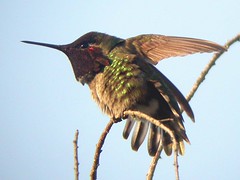
Anna's Hummingbird, Dairy Mart Ponds
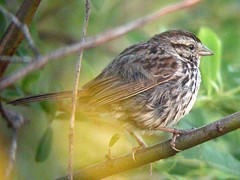
Song Sparrow, Dairy Mart Ponds
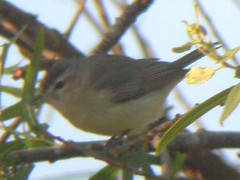
Warbling Vireo, Dairy Mart Ponds
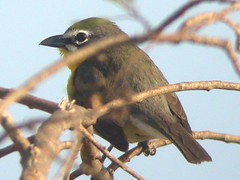
Yellow-breasted Chat, Dairy Mart Ponds
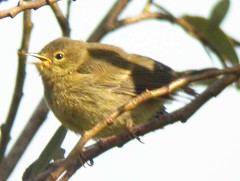
Orange-crowned Warbler, Dairy Mart Ponds
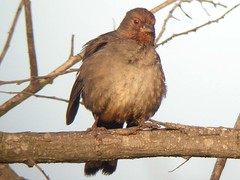
California Towhee, Dairy Mart Ponds
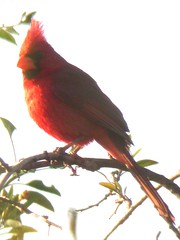
Northern Cardinal, Dairy Mart Ponds
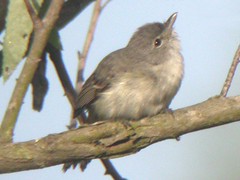
Bell's Vireo, Dairy Mart Ponds

Black-tailed Jackrabbit, Dairy Mart Ponds

Blue Grosbeak, Monument Road

Anna's Hummingbird, South Bay (San Diego)

Forster's Tern, South Bay (San Diego)

Great Egret, South Bay (San Diego)

Mourning Cloak, South Bay (San Diego)

Belding's Savannah Sparrow, South
Bay (San Diego)

Black-necked Grebe, South Bay (San Diego)

California Ground Squirrel, Tijuana Slough

California Ground Squirrel, Tijuana Slough

Clapper Rail, Tijuana Slough

Clapper Rail chick, Tijuana Slough

Otay Lakes
Today I planned to spend a full day birding while Vitty (not a birder) did the tourist thing visiting museums etc. in San Diego. First stop was Dairy Mart Ponds which by all accounts promised to offer some spectacular birding. I arrived before it was light and not entirely sure where to go ended up going round the back first. Consequently I didn't get a clear view of the ponds themselves until later than planned but the scrubby area round the back was very productive indeed.
I had been warned that Yellow-breasted Chat was a skulking and difficult-to-see species, so I was pleasantly surprised to find several perched out in the open, song-flighting and generally putting on a good performance. Common Yellowthroats were the commonest warbler here (about 35 seen), favouring damp habitats but there were also a few Yellow and Orange-crowned Warblers. Song Sparrows were singing all over the place.
Other passerines included Warbling Vireo and a pair of Bell' Vireos. A Western Tanager was seen briefly as were my first Red-winged Blackbirds. Northern Cardinal is common across much of North America but they are not native here - a male seen here was part of a small feral population which has recently become established locally.
A Solitary Sandpiper was flushed from a flooded track and flew off over my head calling. An exciting bird which I hadn't expected to see as they're relatively scarce in California.
Back at the road overlooking the ponds themselves I found a family of Pied-billed Grebes, Great-tailed Grackles, Cooper's Hawk, Cliff Swallows and Downy Woodpecker, but no sign of an American Bittern which I had heard.
A male Hooded Oriole was one of the most striking birds seen so far. A few American Goldfinches were present, the only site I saw them in southern California.
Leaving here I headed west to Monument Road which leads to the Mexican border (or would do if it wasn't blocked before you get that far). This area was good for raptors including 8 Northern Harriers, 4 Cooper's Hawks, 2 Turkey Vultures and both Red-tailed and Red-shouldered Hawks.
I stopped at a flowering bush which looked good for hummingbirds and sure enough there were several here. As well as the usual Anna's there was a single Black-chinned Hummingbird and a couple of others which were probably either Allen's or Rufous.
My first Bewick's Wren was at the end of the road (where it was blocked), along with a couple of gaudy Blue Grosbeaks.
Heading from here up Hollister Road I found my first Black Phoebe and Pacific-slope Flycatcher and a couple more Hooded Orioles. A small lake near the Tijuana River held American Avocets, Black-necked Stints and 14 Cinnamon Teals amongst other things.
Next stop was South Bay in southern San Diego. I hoped to find American White Pelicans and a flock of 10 duly obliged right next to where I parked. A flock of 135 Black Skimmers were present and there were a similar number of Black-necked Grebes (or Eared Grebes as they call them here). A flock of 25 Bonaparte's Gulls was the largest concentration I saw in California.
Leaving here I took a wrong turn which proved fortuitous as I ended up finding Belding's Savannah Sparrow round the corner which I had failed to find at the last stop. This is apparently an endangered form of Savannah Sparrow with a limited range.
Reading about Tijuana Slough I had formed the impression that this was a large reserve requiring a longish walk from the car park. Clapper Rail was the main target here and was supposed to be easiest to see at high tide when they can get pushed out from the saltmarsh. High tide was late evening and I arrived mid afternoon expecting to spend the rest of the day here. It turned out that the reserve was either much smaller than I expected or else was closed as the only accessible part was right by the car park.
A platform here overlooked the slough which didn't look too promising. The tide was still low and my hopes for a Clapper Rail weren't much higher. On first scan, the first thing I saw running along the mud below the saltmarsh was a downy black chick. I immediately suspected it was a baby Clapper Rail and sure enough the parent soon appeared providing excellent views for several minutes. Result!
A variety of other waders were here and 2-3 more Belding's Savannah Sparrows were found. There seemed little point in staying here now as planned, so I decided to head off to Otay Lakes, a site a few miles inland which I had wanted to visit but didn't think there would be enough time.
On the lake there were 3 species of grebe including my first Western Grebes and the scarcer but similar Clark's Grebe side by side for comparison. Another Blue Grosbeak was here and also a dull male (presumably immature) Lazuli Bunting. A Bullock's Oriole was my first of this species which proved harder to find than I had anticipated.
Three days in, and I had seen 108 species of which 73 were lifers!
CLICK HERE FOR THE NEXT DAY
0 Comments:
Post a Comment
<< Home